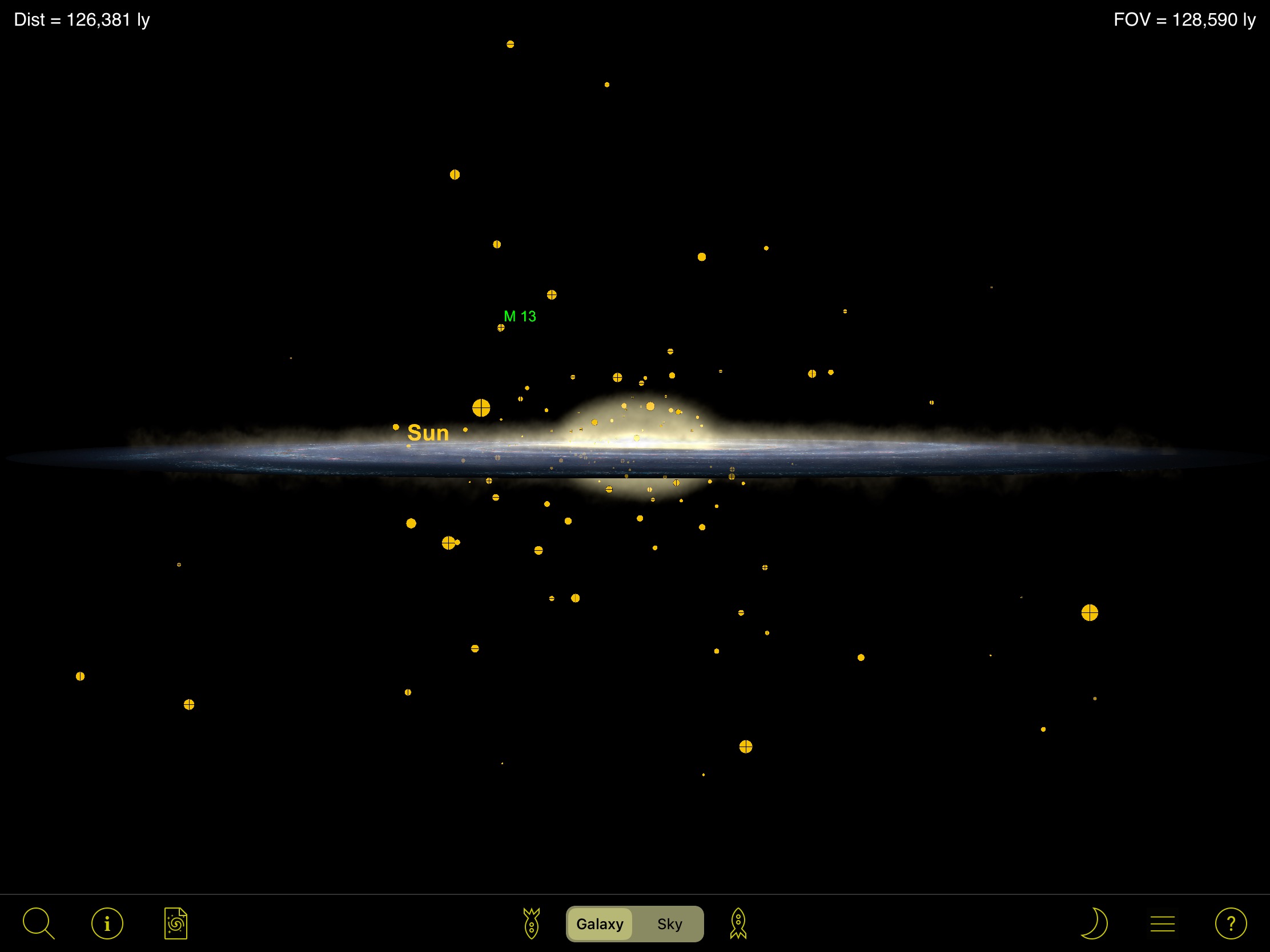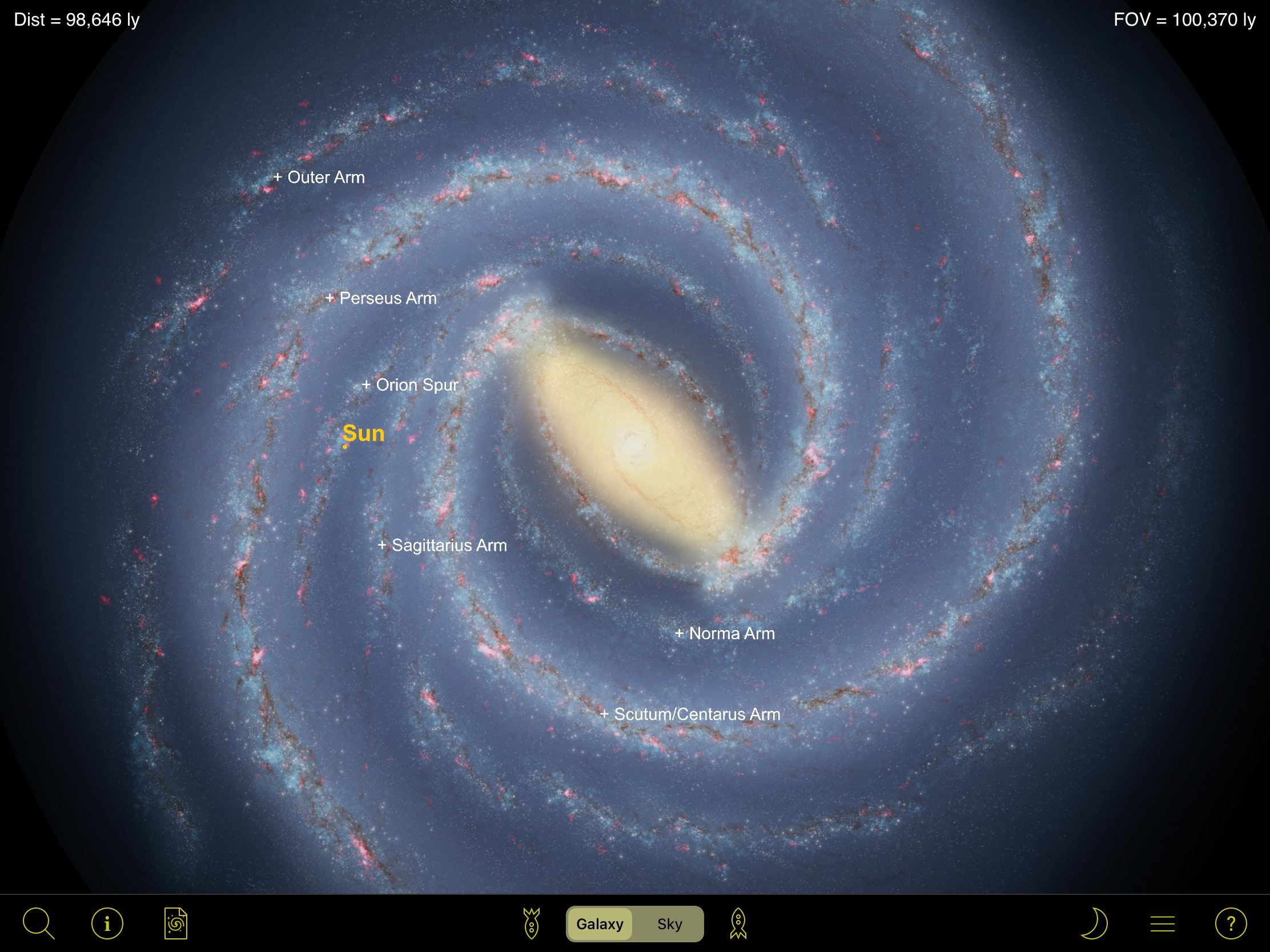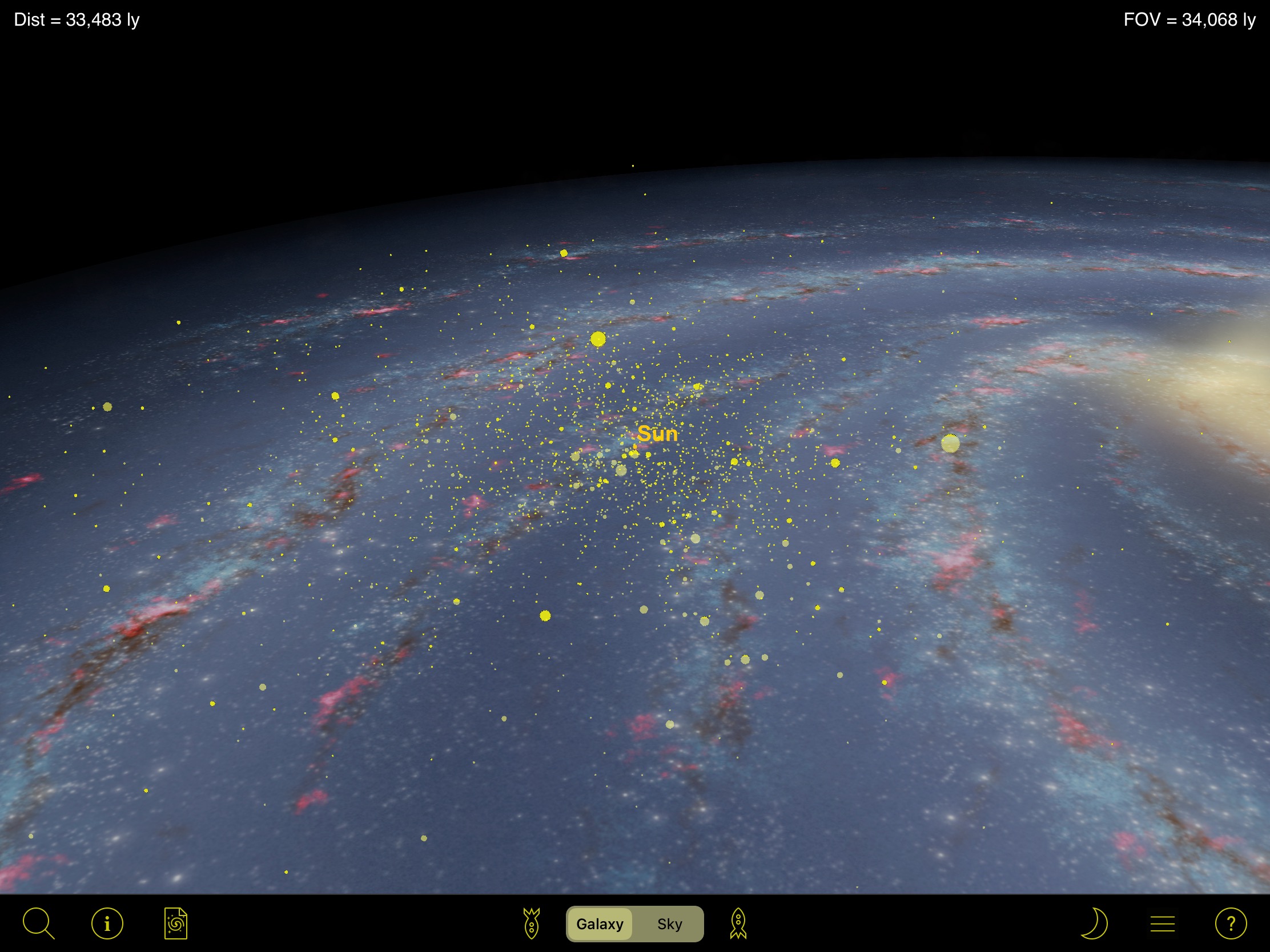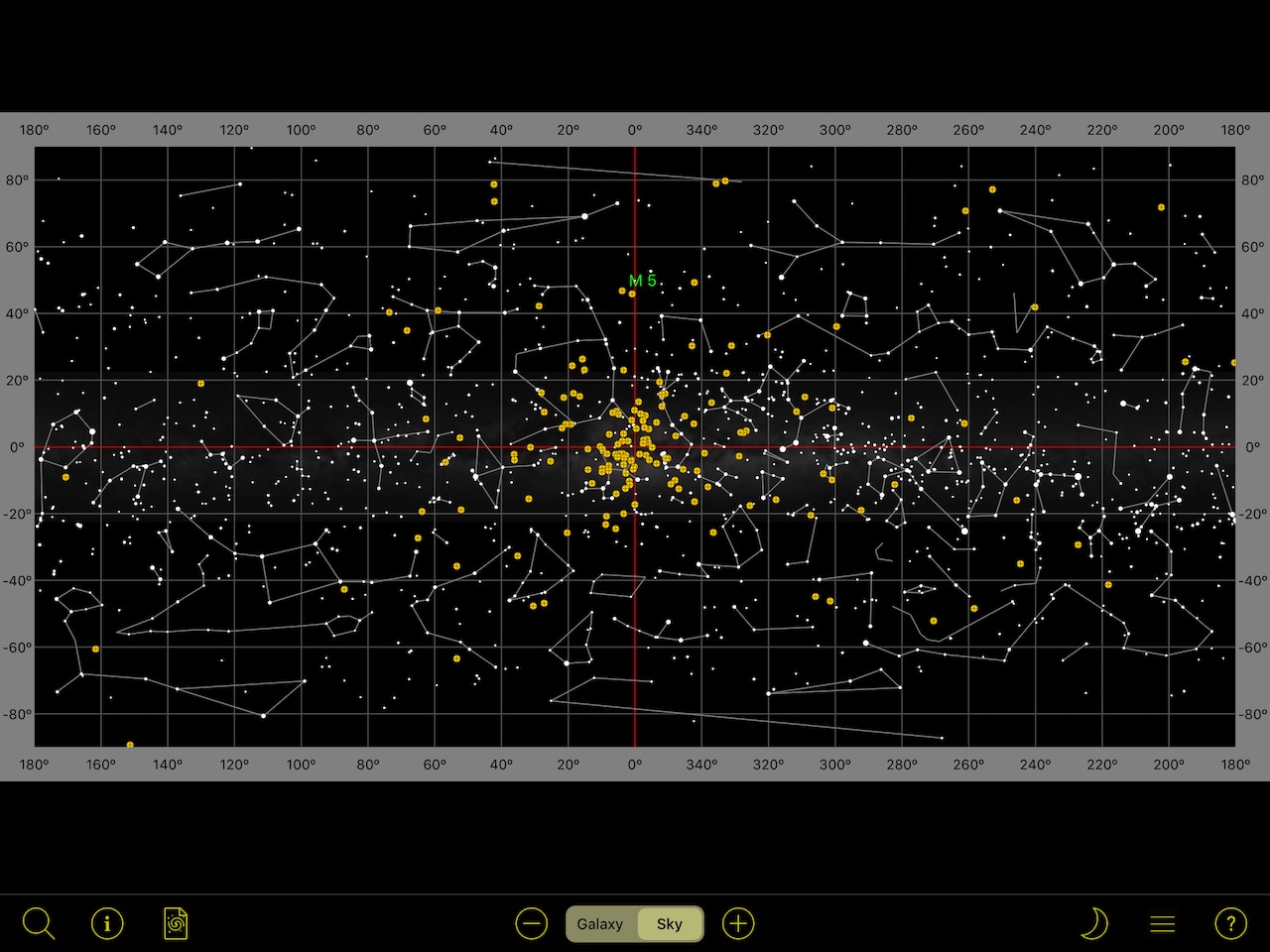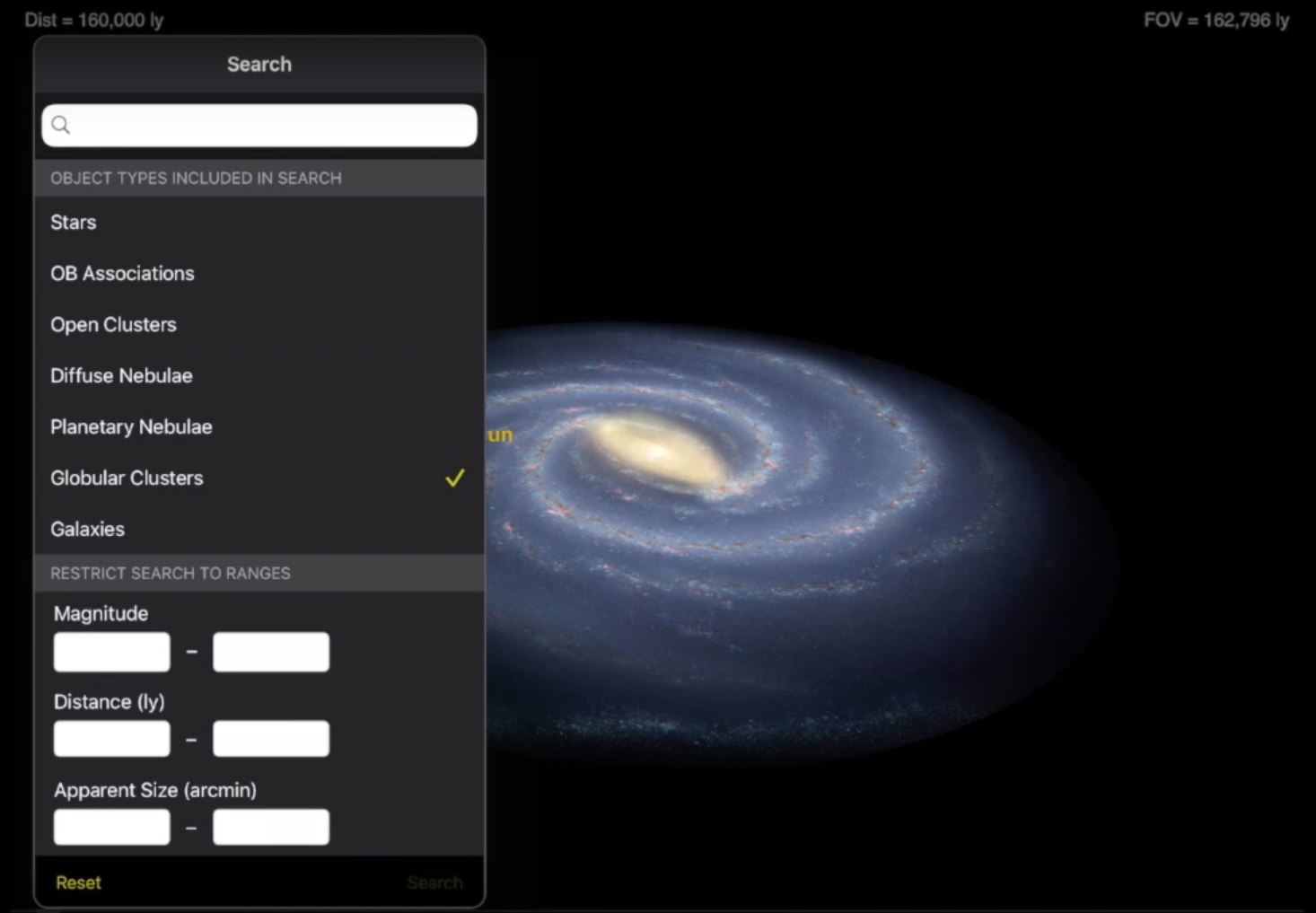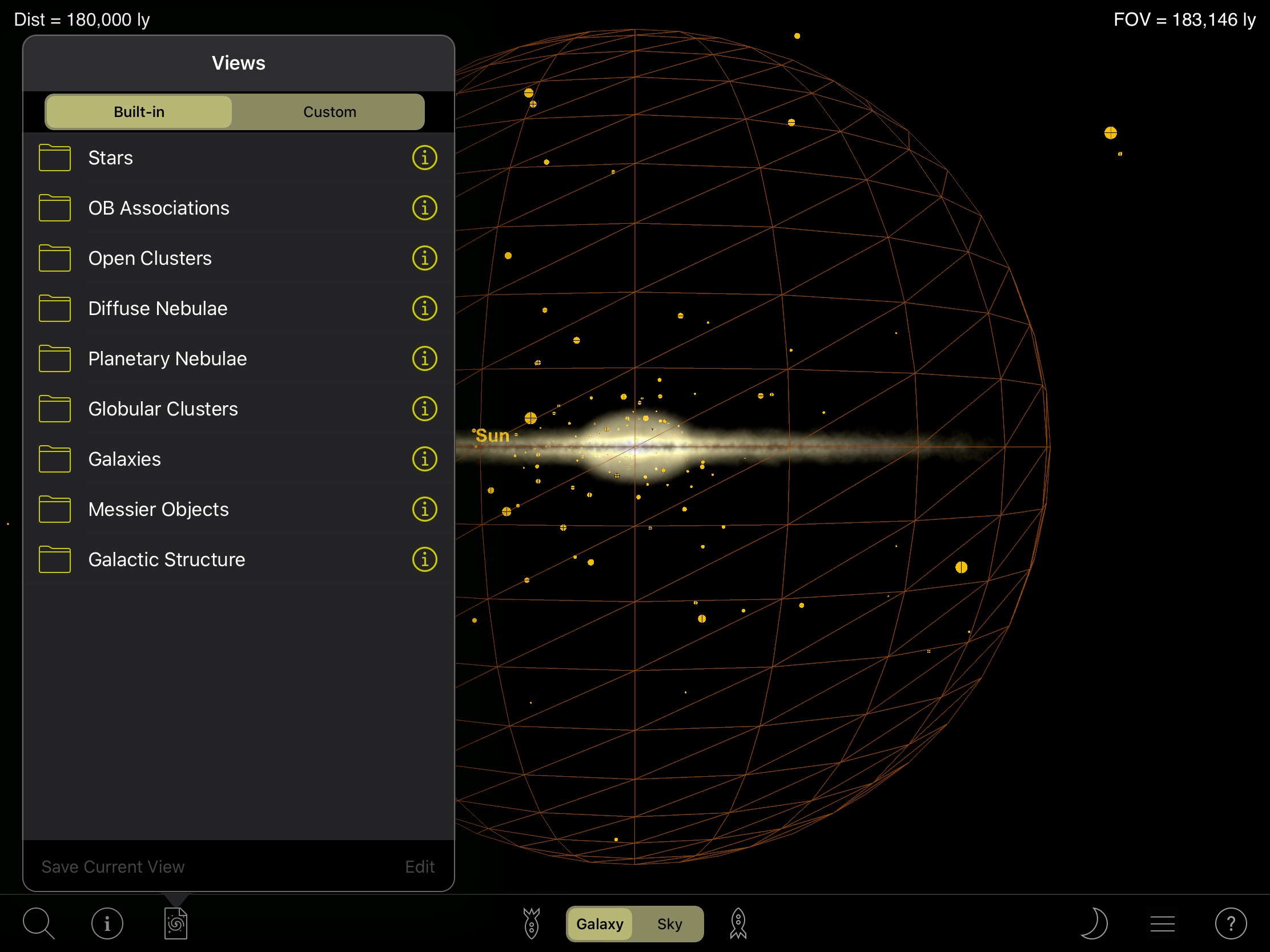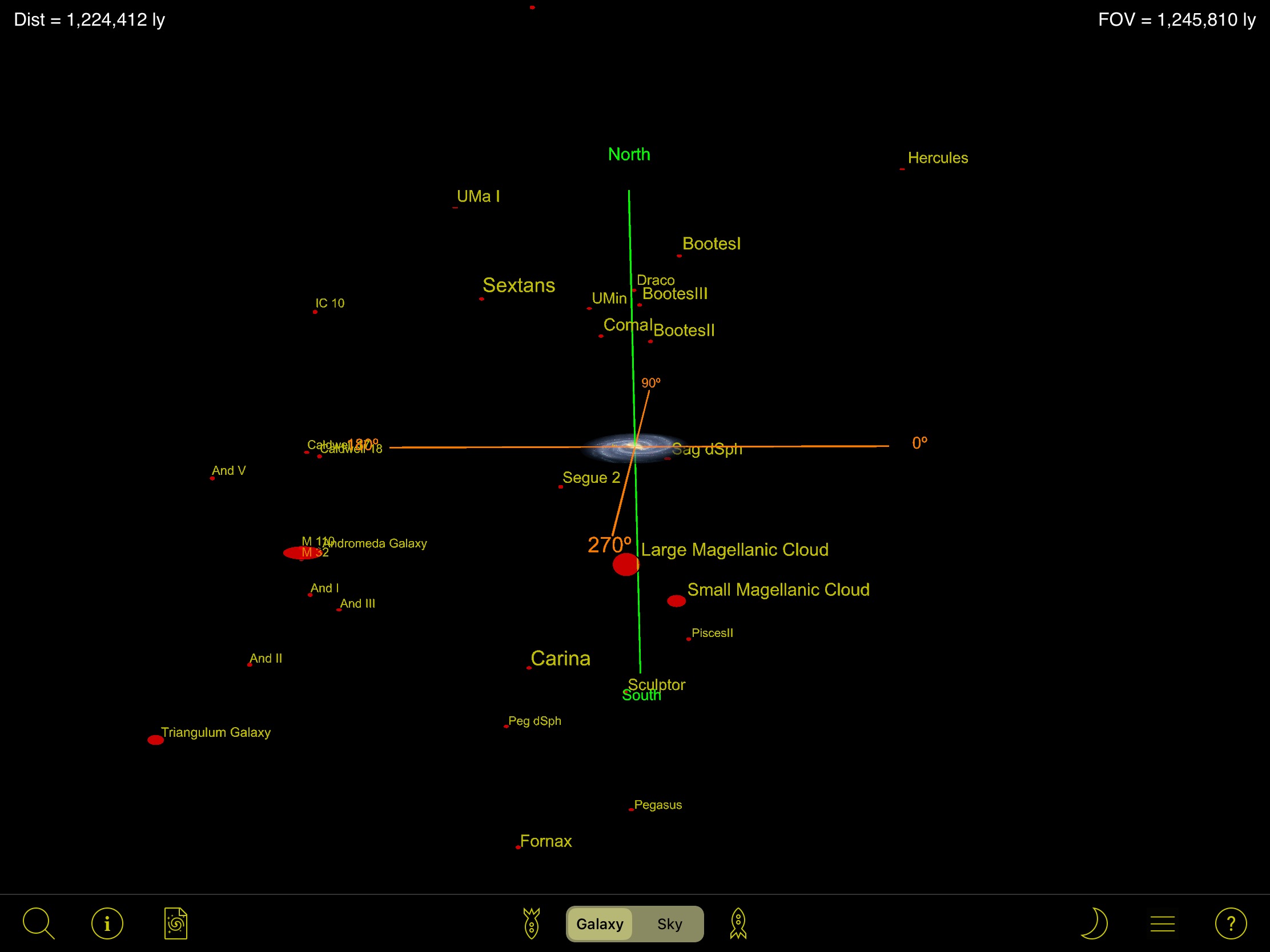Mobile astronomy: Put the Milky Way in your pocket with 'Our Galaxy' smartphone app
From time to time at star parties, I encountered someone who isn't very impressed with the dim, fuzzy object I'm showing them through my telescope. But once I explain what the object is, how far away it is, and how it connects to our place in the galaxy and the wider universe beyond, it sparks their imagination and they look at it again with renewed interest and appreciation. A new fun and educational app called Our Galaxy will let anyone learn about our place in the cosmos, and feel that sense of wonder.
In addition to the obvious bright planets and stars, the night sky is sprinkled with star clusters, nebulas, and distant galaxies, many of which are revealed by looking through binoculars and backyard telescopes. Astronomers refer to those exotic objects as deep-sky objects. Their positions in the sky aren't completely random. Star clusters and nebulas populate the spiral arms of our home galaxy, the Milky Way — with more of them occurring closer to the center of the galaxy and fewer of them appearing along its outer rim. Their locations in the sky allow astronomers to trace out the structure and dimensions of our galaxy, and to determine where new stars are being formed within it.
Related: Stunning photos of our Milky Way Galaxy (gallery)
Planetary nebulas are the corpses of stars not unlike our sun that reached the end of their lives. Those objects can appear anywhere in our sky because our sun sits within a 3-dimensional volume of space; surrounded by stars of all ages. Globular clusters are spherical, densely-packed collections of old stars that orbit our galaxy like bees around a hive — so they tend to be found near the band of the Milky Way, but not inside it. Distant galaxies are sprinkled throughout the sky, but they can only be mapped and observed where our own galaxy's gas and dust don't block their distant light.
Bill Tschumy, one of the creators of the popular SkySafari app, has created the perfect tool to understand our place in the Universe. The Our Galaxy app for iOS and MacOS lets users visualize the locations and physical properties of deep-sky objects within and around our galaxy. The app is a relatively small download at less than 60 Mb. Once loaded on your iPhone, it puts a deep sky expert in your pocket — and the larger display on an iPad really shows off its wealth of detailed imagery.
Viewing our galaxy
The Our Galaxy app can be operated in two modes that are enabled by tapping Galaxy or Sky on the app's toolbar. The toolbar also features icons to open the search menu and Views library, read a page of information about the selected object, toggle red-light night mode, open the app's settings menu and help. Two whimsical spaceship-shaped icons in the toolbar serve as zoom controls — one flies you closer, the other flies you out.
Galaxy View presents a 3-dimensional model of our Milky Way's barred spiral form that you can tilt and rotate, and zoom in and out of. A single tap in the Settings Orientation menu lets you select preset orientations, such as an edge-on view and a face-on view. In the Center menu, you can choose to keep our sun in the center, or rotate around the galactic core or around a selected star or deep-sky object. Across the top of the screen are shown your distance from the selected object, and the field of view (FOV) being displayed in light-years.
Breaking space news, the latest updates on rocket launches, skywatching events and more!
Sky View draws a rectangular (orthographic) map of the entire sky as viewed from Earth. Sky coordinates in degrees are labelled around the perimeter of the map. The major stars and lines that form the constellations are plotted in white on a black background. The deep-sky objects are overlain using colored symbols. The map can be enlarged and panned around. Tapping a symbol shows its object's name. Plotting one or more categories of deep-sky objects on the map view illustrate how they can be used to define our galaxy's structure, or be completely independent of it — all useful information for understanding how galaxies like ours are structured. A single tap switches between sky and galaxy view.
The app is highly configurable. You can decide whether to display labelled names next to the symbols, identify the various spiral arms of the galaxy, and show the Constellation Sectors — the portions of the Milky Way that lie in the direction of certain constellations, such as Orion, Gemini or Cygnus.
To clean up the view, simply enter the settings menu and tap the remove options.
The app contains an extensive library of stars and objects. An object can be selected by typing its name or its designation into the search menu — or by tapping its symbol on the screen. Multiple deep-sky objects can be displayed at the same time, as I describe below.
The app's powerful search menu allows you to type all or a portion of an object's name or designation, include or exclude object types, and limit the search to specific ranges of magnitude (brightness), distance, age, size and more. You can even search all constellations, or select a single constellation.
The list of results can then be displayed on the map or 3D model. It's especially interesting to see how the stars and deep-sky objects of a single constellation fall at vastly different distances from our sun.
The more you work with the app, the more you will learn about astronomy, astrophysics, and cosmology — all presented using clear, understandable text and graphics.
The Views library is especially educational for understanding how various classes of objects populate the galaxy. Nine categories are offered: individual stars and OB Associations (hot, bright stars), open and globular clusters, various types of nebulas, galaxies, and our galaxy's structural components. There is also an entry for the list of well-known Messier objects. Each entry has an information icon to summon a description of that object class.
Tapping any category opens a sublist that allows you to select all members of the class, or sub-groups. For example, in the Diffuse Nebulae view, you can treat emission and reflection nebulas as separate groups, or combined, each type color-coded appropriately (with red for light emitted from hydrogen, blue for starlight scattered off dust, and green for both phenomena).
The Visibility menu contains sliders to plot galactic axes and to add wire mesh representations of the galaxy's central bulge, dark matter halo sphere, and more.
For cosmology buffs, the app contains 3D locations for hundreds of galaxies. Selecting the galaxy category and using "Galaxy view" puts you 92 billion light-years away from home. Manipulating the model shows how some galaxies concentrate in groups while others leave empty voids in the visible universe.
The Our Galaxy app will give you a true perspective on our place in space. Bill Tschumy has posted a YouTube video demonstration of the app here. Enjoy exploring the galaxy and, as always, keep looking up!
- Mobile stargazing: diving into deep-sky objects using mobile apps
- Hunting for spring galaxies with mobile astronomy apps
- The best mobile apps for spotting and identifying orbiting satellites and iridium flares
Chris Vaughan is an astronomy public outreach and education specialist at AstroGeo, a member of the Royal Astronomical Society of Canada, and an operator of the historic 74-inch (1.88-meter) David Dunlap Observatory telescope. You can reach him via email, and follow him on Twitter @astrogeoguy, as well as on Facebook and Tumblr. Follow SkySafari on Twitter @SkySafariAstro. Follow us on Twitter @Spacedotcom and on Facebook.
OFFER: Save at least 56% with our latest magazine deal!
All About Space magazine takes you on an awe-inspiring journey through our solar system and beyond, from the amazing technology and spacecraft that enables humanity to venture into orbit, to the complexities of space science.
Join our Space Forums to keep talking space on the latest missions, night sky and more! And if you have a news tip, correction or comment, let us know at: community@space.com.

Chris Vaughan, aka @astrogeoguy, is an award-winning astronomer and Earth scientist with Astrogeo.ca, based near Toronto, Canada. He is a member of the Royal Astronomical Society of Canada and hosts their Insider's Guide to the Galaxy webcasts on YouTube. An avid visual astronomer, Chris operates the historic 74˝ telescope at the David Dunlap Observatory. He frequently organizes local star parties and solar astronomy sessions, and regularly delivers presentations about astronomy and Earth and planetary science, to students and the public in his Digital Starlab portable planetarium. His weekly Astronomy Skylights blog at www.AstroGeo.ca is enjoyed by readers worldwide. He is a regular contributor to SkyNews magazine, writes the monthly Night Sky Calendar for Space.com in cooperation with Simulation Curriculum, the creators of Starry Night and SkySafari, and content for several popular astronomy apps. His book "110 Things to See with a Telescope", was released in 2021.

